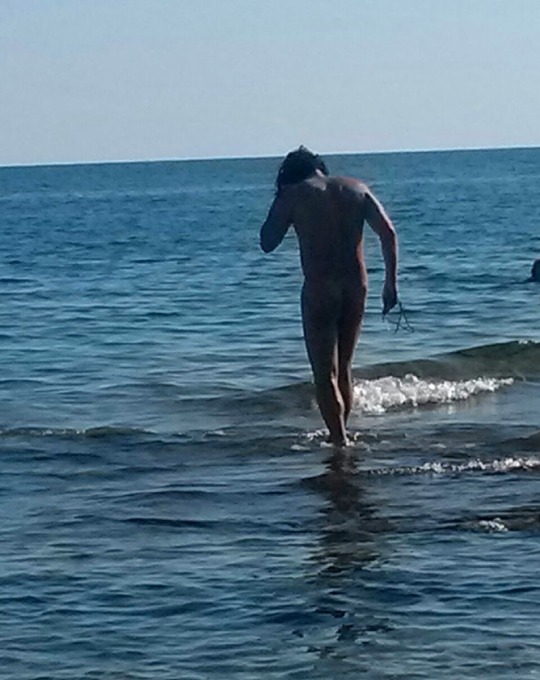#deček
Text
Čarobne sobotnice: Kdo je napravil Vidku srajčico
Sobota, 16. december 2023 | 11.00
Dom kulture Velenje
Kdo je napravil Vidku srajčico
KD Gledališče Velenje
Zimzelena zgodba Frana Levstika je nastala v domači produkciji igralske ekipe Gledališča Velenje. Mali Videk je deček, ki živi z mnogimi bratci in sestricami ter materjo. Ker je najmlajši od otrok, vedno vse reči dobi zadnji. Tudi srajčico, ki pa je zato tudi vedno najbolj ponošena in obrabljena. Nekega dne si jo pri igri strga, a so doma zelo revni in si nove srajčice zanj ne morejo privoščiti. Takrat pa na pomoč priskočijo gozdne živali in rastline, ki jih ima Videk neizmerno rad in vedno poskrbi zanje. Ovčka, pajek, rak, grm in ptiček združijo svoje moči in Vidku sešijejo čisto novo srajčico. Videk ves vesel steče domov, kjer si vsa družina veselo ogleduje njegovo novo srajčico. In na koncu si skupaj z Vidkom zapojemo: »Rad imam, rad imam živali in cvetlice …«
Po ogledu otroške predstave obiskovalce vabimo v avlo male dvorane doma kulture, kjer bodo lahko ustvarjali na temo predstave, ki so si jo ogledali.
Vstopnina: 3 €
0 notes
Text
Apples and Tilly trees or a lingustic excursion in Narnia translation
a bit too deep dive by yours truly, since @loveliness-and-prattle and @keendaanmaa asked so nicely on a "how do you pronounce Calormen" post and I love this niche subject a tad bit too much.
Some basics: I'm from Slovenia, Slovene is my mother tounge and I love it, I think it's fascinating. It's part of the Southern-Slavic language group, and due to its historical development it shares certain traits and words with Germanic, Romanic and Eastern-European languages. A true linguistic parkland of grammatical diversity that would make Pulverulentus Siccus weep tears of pure joy, no doubt.
The first time Lewis's The Chronicles of Narnia (published 1950-1057) were translated was in the 1990s, well after Slovenia's independence in 1991. I suspect the reason behind such a late publication lies in the fact that Lewis is a known and influential Christian apologetic, and the socialist government of Yugoslavia enforced quite a censorship on anything that smelled remotely like foreign or religious press. Proprietors of such publications found themselves under surveillance, in interrogation or even prison and the material confiscated. The first translation was made by a man who was primarily a historian, a wery-well read one; his language style is somewhat archaic, but in the very best sense, like fine wine. The newer translation was made after the popularity and interest soared with the 2005 film, produced and printed by the more secular publishing house with one of their own translators for foriegn children's books. Its expressions are more simplistic, adapted to what millenials like myself at that age would understand but in my taste somewhat lacks the archaic quality, which I noticed only after reading the English original. But more later in examples, as most of this might make zero sense to anyone who knows nothing about Slovenian language. That's on the style of translation.
And now on translating examples, for which you are here: is it a literal translation, an adaptation to help Slovene pronounciation or has it not changed? Well, a little bit of everything I guess. I shan't write all the translations, just the titles and lands and main characters.
The translations of book titles (in publication order):
(o.t. - older translation), (n.t.-newer translation), (b.-both)
The lion, the witch and the wardrobe - Lev, čarovnica in omara (b.) Literal translation.
Prince Caspian - Princ Kaspijan (b.) Caspian's personal name was adapted to the way it's pronounced in English - "C" is pronounced as "K" and the ending "-ian" gets a "j", which in Slovenian is pronounced much like how the Germans pronounce the letter "j"; a small sound, but to be included.
The voyage of the Dawn Treader - Potovanje Jutranje zarje (o.t.) - mostly literal, though it's interesting how the name of the ship "Dawn Treader" is translated as "Jutranja zarja", literally "morning dawn". If "treader" as in someone who treads, a wayfarer, would be translated too, it would be more like the newer translation, "Potovanje Potepuške zarje" (n.t.), as "zarja" means "dawn" and the adjective "potepuške" describes someone who travels, but more in the sense of a vagabond, a stray, in a negative sense.
The silver chair - Srebrni stol (b.) literal translation.
The horse and his boy - Konj in njegov deček (o.t.), literal, though the use of word "deček" for "boy" is grammatically more corect, it's becoming almost archaic in Slovene, this is probably why the newer version opts for "Konj in njegov fantič"(n.t.), which is a more used word for "boy" though it's a miniscule of "fant", grammatically speaking only acceptable in conversational Slovene and stylistically marked.
The magician's nephew - Čarovnikov nečak (b.) literal translation
The last battle - Poslednja bitka (n.t.) is a litteral translation, and semantically slightly more correct than the older version, "Poslednji boj" (o.t.). "Bitka" means battle, and "boj" means more a fight, or even battle in a broader, archaic sense, which is why its translator probably used it.
On lands' names:
In "Narnia", the "i" in Slovene version gets a "j", as "Caspian" did above, so "Narnija". Simmilar with "Calormen", just the "C" is replaced with "K" so "Kalormen". Telmar stays the same, Anvard is the same, so is Cair Paravel. Tashbaan is just adapted to "Tašban"; letter "š" marks the sound of "sh". Likewise in Charn, the sound "ch" is written with the letter "č", so Čarna. The -a suffix at the end indicates that Čarna has a feminine grammatical gender, as do almost all countries in Slovenian language. In Slovenian, inanimate objects can have either feminine, masculine or neutral grammatical gender because of its declination, like in German and Latin.
"Archenland" is calqued to "Pradežela", an ancient land, so are some of the parts in Narnia, like Dancing Lawn, The Stone Table, Beaversdam, The Lantern Waste, Western Woods. Some port and island names from VDT are also calqued, like Narrowhaven, which becomes "Tesnaluka" (ot.), a literal translation meaning "a narrow haven". The newer "Zakotnjan"(n.t.) is not a calqued, but a somewhat translation, which sounds a bit funny, because it means "that place/town in the corner", as in off-hand, remote, forgotten.
Personal names:
The children's names were mostly just adapted to the Slovene version, as we too have people named Peter, Suzana (Susan) and Lucija (Lucy). Edmunds are rare, so it just stayed the same. Digory Kirke was unchanged. Polly Plummer was just changed to Poli (n.t.) (as "y" is pronounced as "i")(couldn't get info on the old version). Jill Pole was called Julija Pol (o.t.), which is closer to Juliet and the last name stayed the same. The newer version names her Jelka Preklar (n.t.) a somewhat literal translation, as "pole" as in a wooden post, a bigger stick also called "prekla" in Slovene. This word is usually used to describe lanky, tall people, in a slightly joking manner. "Jelka" means "fir tree" and is a normal female name here. So she too, gets a bit of an unfortunate name, like her friend, Eustace Clarence Scrubb. He was translaed to "Evstahij Grmič" (o.t.), "grmič" meaning more of a small shrubbery, whereas the newer verion is very unfrogiving with "Ščetka", literally a scrubb or a brush. Either way, it is as unfortunate as Lewis intended, so mission accomplished I guess. Though it would be noted, that the older verion declinates the female person's last name, so it's not "Julija Pol" but rather "Julija Polova", so the last name takes the form of an adjective (like Russian names).
We already saw what happend to Caspian's name, so maybe just note that all his descendants and friends, whose names end in "-ian" also get that phonetic "j"- so Drinijan, Rilijan, Tirijan.
Aslan stays the same. It means Lion in Turkish, but i bet you knew that.
The creatures mostly get translated names (Bree and Hwin being exceptions with only phonetical transcription - Bri and Hvina- and Tumnus staying the same), I'll just mention some I found interesting: Reepicheep becomes "Repicvil" (o.t.) meaning "Squeaktail", and "Cviličil" (n.t.) meaning "Squeaker". Kinda disrespectful, but I guess they were trying to mimic the onomatopoea of his name. Dufflepuds get to be "Cepetački" (n.t.) meaning someone with restless small stamping feet and "Traponogci", "silly-feet". Puddleglum is "Mlakočmer" (o.t.) which is a literal translation, and "Tarnavko" (n.t.), which means "Complainy" or "Whiny" and has nothing to do with puddles.
Interestingly, the villains mostly get to keep their original names: Jadis, Miraz, Rabadaš. The exception is Shift, becoming "Zvitež" (o.t.), which is a close translation (means cunnig, shifty), and "Lumpež" (n.t.), meaning naughty person, a rascal. And Lady of the Green Kirtle just gets literally translated to "Gospa Zelene obleke" (o.t.) and "gospa zelenih oblačil" (n.t.), though this last one has "oblačil" which just means clothing in general, whereas "obleke" does mean a dress specifically.
To conclude this already unseemingly long Kranjska sausage of a post, i would like to say that the reason behind the translator's choice to change names was simply to bring the story closer to the reader. Because it's a children's book and children do not usually posess vast semantic and etimological knowledge, especially not in a foreign tounge, so it's much more reader-friendly to translate names to something that has the same meaning or adapt to correct pronounciation when a name is just a name. This sort of linguistic fiddling is later fun to a 20-something Narnian with an amateur's love for comparative translations. I hope I gave you some idea how translating worked in this particular case, and if you have any interesting translational comparisons from other languages, please share them, I would love to see them. Also if you have any specific questions on the topic, feel free to send me an ask.
On my personal experience in translating: I'm an amateur, my only experience comes from making subtitles for films/series for viewing with friends who don't understand English so fluently as not to need subtitles. But I learned a lot, also by watching/listening to some really bad examples of dubbing/subtitles.
I could also tell you about how some translators here in Slovenia became somewhat famous because they translated some of the biggest works of fiction to Slovene, but that's a bucket of sardines for another round of tea.
As it goes, thank you for reading this far. I really appreciate it.
#narnia in translations#cs lewis#languages and translations#narnia#the chronicles of narnia#zgodovinarjev šiček
32 notes
·
View notes
Note
Drahý člověče, zajímaly by mne tvé zásadní odpovědi k otázkám 9, 10, 22 a 16, prosím! ^^
S největším potěšením!

Babička má drahá má (krom všemožných deček ve všemožných provedeních - ano, háčkované, ba i paličkované vlastní, vskutku, i paličkované) sbírku malých okrasných slonů. Takových těch, kterých, když jich má člověk sedm, přinesou mu hojnost, zdraví, blahobyt, též štěstí, světový mír i nadvládu nad kolektivním nevědomím vesmíru stejně jako schopnost normálně pracovat se svými emocemi. (Aspoň takový pocit z těch slonů mám já, která si vyslechla spoustu v e l m i o b s a ž n ý c h monologů na téma keramických slonů od své dětské učitelky klavíru.) (...žel Bohu - nebo možná naštěstí - si ani jeden z nich už nepamatuju. Jediné, co vím, je, že byly fakt. Velmi. Obsažný.) Tedy. Babička těch slonů samozřejmě nemá sedm. (Má asi tři.) Nejsem si jistá, kolik jich vlastně vlastní (tři), ale vzhledem k tomu, že stále nevládne kolektivnímu nevědomí vesmíru, aspoň pokud vím, musí jí ještě nějaký ten slon chybět. (....čtyři jí chybí, čtyři.)
(ne, taky nevím, proč to píšu takhle.)
Má teta sbírá mince. Starý mince. Nový mince. Divný mince. Drahý mince. Umělecký mince. Jednou (když jsme teď měly letět do Londýna a neskutečně vtipně se to zvrhlo) nás ve svém bombovém krytu (ano, to bylo poté, co se to zvrhlo) obrala o všechny nové jednolibrovky, a to z toho důvodu, že mají teď nový design (soutěž vyhrál patnáctiletý kluk) se čtyřmi rostlinami symbolizujícími čtyři části Spojeného království Velké Británie a Severního Irska - tedy Anglii (růže), Wales (pórek), Skotsko (bodlák) a Severní Irsko (čtyřlístek). Váží cca 9 gramů a má to být ta nejhůře zfalšovatelná jednolibrovka, co zatím Británie razila. ...Yep, teta měla k té minci hodně co říct. (pokud se chcete kochnout, je tu:)
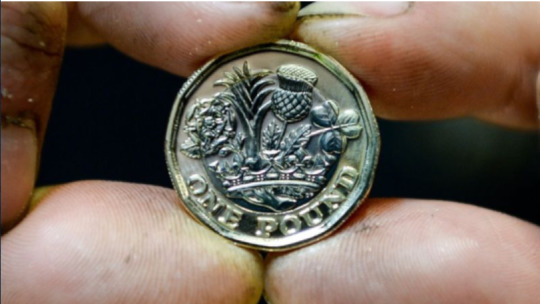
....taky sbírá umělecké mince sluneční soustavy, které chce časem výhodně prodat. Má Slunce a Měsíc, Zemi jí vyfoukli, protože je nejhezčí. Mám pocit, že je to tahle (Krom toho, že ji už nemají, jsem neviděla ani ty, co teta vlastní. Ztratila je totiž někde ve svém bytě v průběhu uklízení.):
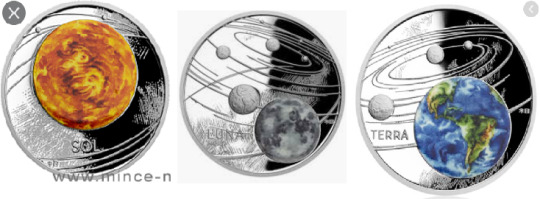
Podivného asociálního strýce z vesnice nemám. ...Ale chtěla bych je začít sbírat.
*zahledí se do dáli a představuje si svoji budoucí výstavku*

Aj. ..Aj.
Mám naprosto otřesnou paměť na prokleté věci, které mi říkají ostatní lidé. A jakkoli je to fajn pro mé mentální zdraví, teď se mi to, zjevně, zrovna vymstilo.
Mohu odpovědět prokletými a neskutečně dlouhými monology (které si, ano, nepamatuji) o sbírce (minimálně 13ti) keramických slonů mé děsně staré učitelky na klavír když mi bylo 5 let? Protože krom toho mám jen naprosto běžný a normální prokletý věci který na sebe hážem se sestrou už od dětství a teď nerozlišuju jestli to jsou řečený věci nebo skutečně vržený věci

Kreslit chci. Popisovat taktéž. Nakreslím a popíšu, jakmile si najdu čas na kvalitní ztvárnění.

Tady není pochyb.
“Prosím vás, humanoidé! Začněte už teď a předzásobte se toaleťákem a těstovinami, jelikož jinak budou za pár let zet supermarkety prázdnotou!
P.s.: Mé minulé já, ...ty víš, co ti chci říct.”
5 notes
·
View notes
Text
Dallas in težak razpored
Dallas je včeraj v glavnem mestu Mehike povozil Detroit in se tako še bolj utrdil na 3. mestu zahodne konference. Pred tekmo je Dallas bil v vlogi favorita na stavnici bet at home bonus in vlogo tudi izpolnil. Dallas je Detroit premagal s 122:111. Na tekmi pa je zopet blestel Slovenski čudežni deček Luka Dončić, ki je zopet dosegel pošasten trojni dvojček. Detroitu je nasul 41 točk ob tem dodal še 12 skokov in 11 asistenc. Sedaj pa se za Dallas začenja zelo težak razpored.
V naslednjih dneh bo Dallas odigral kar 5 zelo težkih tekem proti trenutno prvim petim ekipam vzhodne konference.
Najprej Dallas na domačem igrišču čaka Miami potem pa gostujejo pri Bucksih in potem zopet doma gostijo Boston potem pa še sledita dve gostovanji pri Philadelphiji in Torontu. Teh 5 ekip je na vzhodu trenutno razvrščenih od 1 do 5 mesta. Dallas bo v naslednjih dneh lahko pokazal kako zelo močan je oz koliko jim še manjka do najboljših ekip v ligi nba, ki kotirajo najvišje na stavnicah kot so bet at home bonus. Dallas bo na teh tekmah v vlogi favorita nastopal po našem mnenju na samo 1 tekmi in sicer proti Miamiju doma. V vseh ostalih tekmah pa bo vloga favorita pripadla nasprotnikom.
Koliko zmag bo dosegel Dallas v teh 5 tekmah? Po našem mnenju bi lahko zmagal vsaj dvakrat in sicer proti Bostonu in Miamiju, medtem ko bo na ostalih 3 tekmah zelo težko. Če pa vprašamo stavnico bet at home bonus pa je favorit samo proti Miamiju če sploh. Kakor koli smo optimisti in upamo na čim več zmag. Dallas lahko preseneti recimo tudi Toronto ali pa Philadelphio, če bo Embid imel slab večer zelo težko pa bo premagati Buckse. V kolikor Dallas dobi vse tekme potem pa res ne vidimo več druge opcije kot da že letos napade naslov!
youtube
1 note
·
View note
Photo

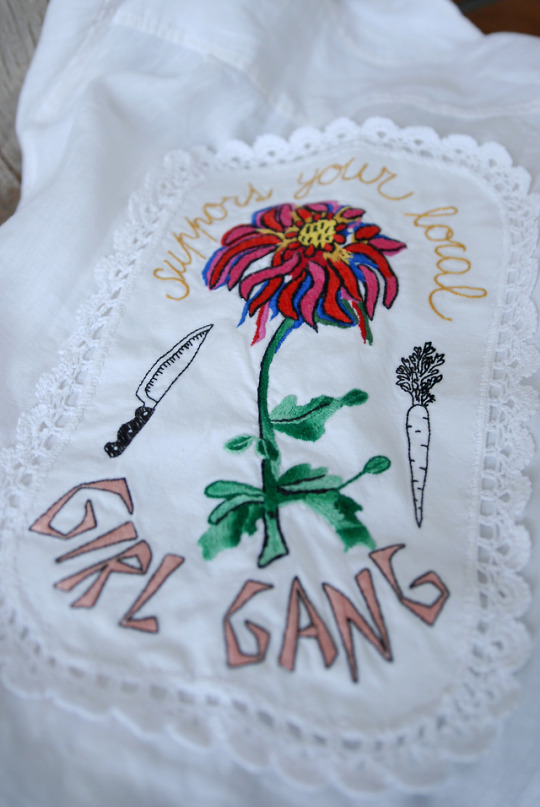
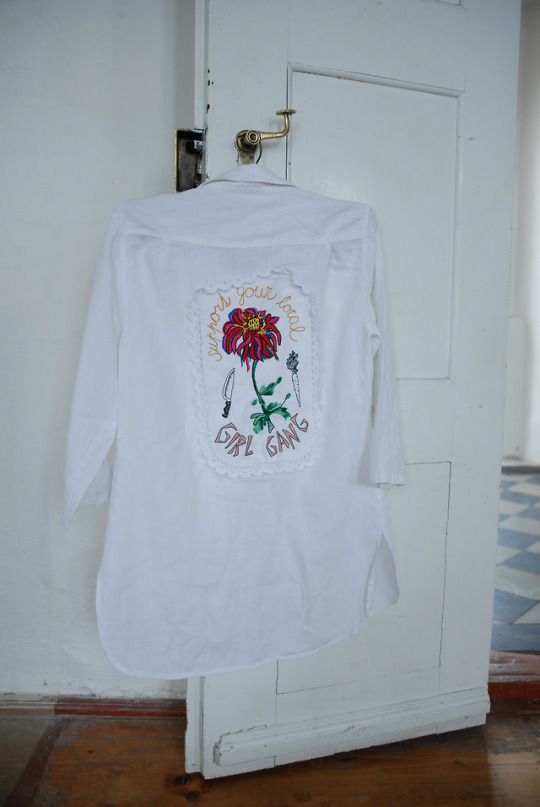


Vyšívání
Výšivka mě přitahuje především díky možnosti postihnout určitý vizuální kód a jednoduchým způsobem jej transformovat. Estetika deček, které jsou pokryty někdy víc a někdy míň pečlivým výšivkovým motivem, je silná především v tom, že zároveň vidím ty tety a babičky, jak dečky nutí svým blízkým. Všude je jich plno, na nic nejsou a v kombinaci s televizí, na kterou se často umisťují, nabírají třaskavý postmoderní vzhled novodobého oltáře. Do dečky se dá vpíchnout znova, o mnoho let později, s láskou si vzpomenout na tetu a destruovat to vysedávání osamělých žen u modře blikajícíh oltářů.
Pořádám pravidelné setkání vybraných žen v jednom prostoru za účelem transformovat vlastní výšivkou již dekorovanou dečku. Zachycuji pomocí fotografie atmosféru prostoru a jednotlivé účastnice s jejich výtvory. Textově zpracuji příběhy, které se vážou k jednotlivým dečkám/objektům. Pokusím se fotograficky stopovat další novou cestu dečky, její umístění, funkci, změnu estetického kódu.
1 note
·
View note
Link
0 notes
Text
Pastirček ali Deček s piščalko?
Pastirček ali Deček s piščalko?
Edini ljubljanski kip, ki v dveh odlitkih stoji na javnih površinah,
poleg tega pa ima tudi dve imeni: Pastirček in Deček s piščalko.
Kipar Zdenko Kalin ga je ustvaril leta 1942, par let kasneje pa ga je odkupila mestna občina in ga postavila v park Tivoli ob prvi obletnici osvoboditve.
Po osamosvojitvi so postavili drugi odlitek pred zgradbo nacionalne televizije.
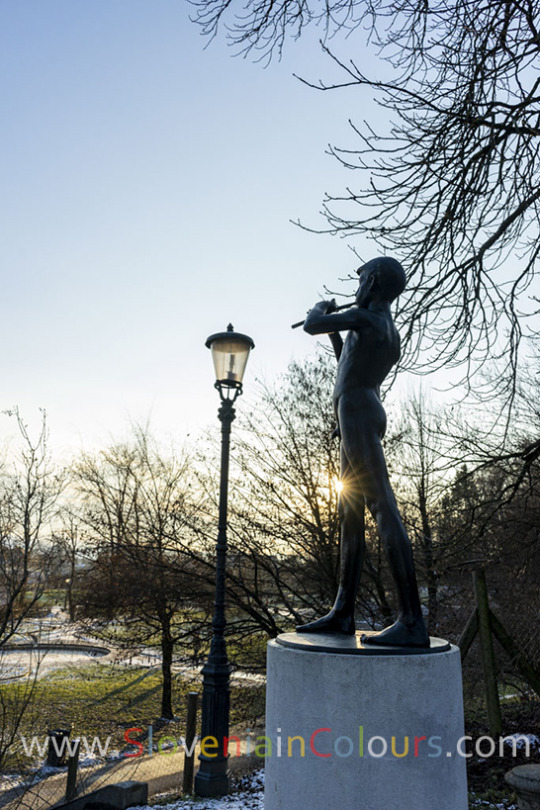
View On WordPress
0 notes
Photo
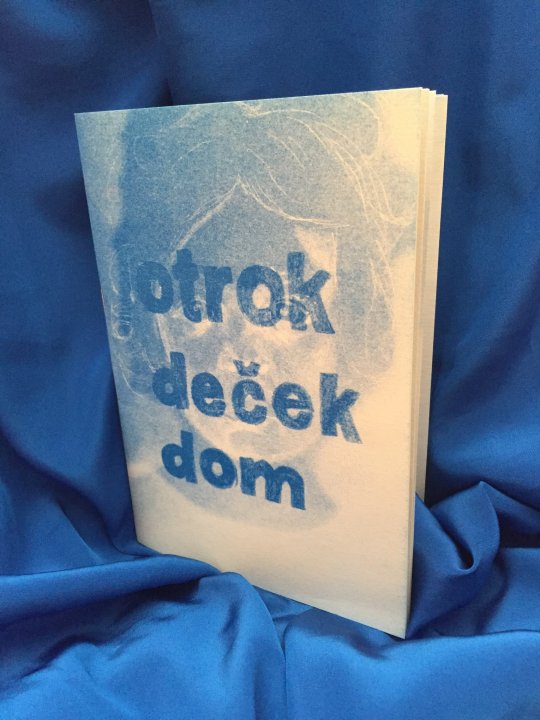
Tara Rubinić | Otrok deček dom | 2020
Risoprinted zine with gentle and sentimental content attached to a child, a boy and home.
From ZINE VITRINE OPEN CALL 2020.
photo: Ema Kobal
0 notes
Text
Ob svetovnem dnevu gledališča: Kdo je napravil Vidku srajčico
Ponedeljek, 27. marec 2023 | 17.00
Dom kulture Velenje, mala dvorana
Kdo je napravil Vidku srajčico
KD Gledališče Velenje
Zimzelena zgodba Frana Levstika spet prihaja na naše odre, tokrat v domači produkciji mlade igralske ekipe Gledališča Velenje in v režiji Romea Grebenška. Mali Videk je deček, ki živi z mnogimi bratci in sestricami ter materjo. Ker je najmlajši od otrok, vedno vse reči dobi zadnji. Tudi srajčico, ki pa je zato tudi vedno najbolj ponošena in obrabljena. Nekega dne si jo pri igri strga, a so doma zelo revni in si nove srajčice zanj ne morejo privoščiti. Takrat pa na pomoč priskočijo gozdne živali in rastline, ki jih ima Videk neizmerno rad in vedno poskrbi zanje. Ovčka, pajek, rak, grm in ptiček združijo svoje moči in Vidku sešijejo čisto novo srajčico. Videk ves vesel steče domov, kjer si vsa družina srečno ogleduje novo Vidkovo srajčico.

Rezervacije na 03/898 25 90
0 notes
Photo

Peter Florjančič
Zanimive življenske zgodbe slovenskega izumitelja Petra Florjančiča, rojenega v blejski hotelirski družini 5. 3. 1919, so nam ohranjene v številnih časopisnih, radijskih in televizijskih zapisih. O njem je režiser Karpo Godina posnel film, izšle pa so tudi knjižne izdaje. Že kot desetletni deček je s sestro Špelco sodeloval pri prvem slovenskem filmu V kraljestvu Zlatoroga. Ob izidu je bila to ena najbolj iskanih in prodanih razglednic.
0 notes
Text
Maja Kastelic

In this post, Maja talks about her debut picturebook, ‘Deček in Hiša’ (A Boy and a House). This beautifully illustrated wordless story is published in Slovenia by Mladinska knjiga, and is a homage to children’s literature and illustration.
Visit Maja Kastelic’s blog
Maja: ‘If I create from the heart, nearly everything works; if from the head, almost nothing.’
—Marc Chagall
‘A Boy and a House’ is a silent book about a little boy’s morning wandering, and also, or even more, a story about going up and following the light, about curiosity and daring, getting lost and finding, friendship, secrets, and also about hoping for and believing in happy endings. I also wished to make it as a homage to literature, illustration, and to the nostalgic beauty of old times and timeless things.
It was my first picturebook and it took me two years to finish it. Its making was full of everything – from enthusiasm to despair, paralysing uncertainties and little miracles on a small scale that seemed the world to me. A lot about the book changed while working on it, but the main idea remained the same: I wanted to make a book I’d give to a dear friend.
I studied painting while working as a fresco retoucher, but I’ve loved books and admired illustration for as long as I can remember. I’d been wishing I could somehow work in illustration for many years (and through two pregnancies), but there was never enough time, or the time wasn’t right, or I just didn’t know how to do it properly. So I just kept on daydreaming till I finally decided to enter the Slovenian Biennial of Illustration.
I’d never worked on a book project before, so I had to come up with my own story. Sketches of a boy I made some time earlier made me think about the need to seek the light and the effort we make to rise – and how we must believe in finding beauty. So I did three illustrations of a boy following a light through a mysterious old house. The illustrations were awarded in the Slovenian Biennial of Illustration, which encouraged me to make a storyboard and send it to Mladinska knjiga, the main publishing house in Slovenia. There were no words, at first because I just didn’t think about it, and later as a decision: wordless books are so universal and accessible, but their capacity to adapt to the reader’s perspective also makes them unique and personal.
The first version goes like this: A boy walks to school in the early morning when it’s still dark, but stops at the open doors of a lighted house. There is a cat who leads the boy through the labyrinth of rooms and staircases until they arrive on the roof to find the spectacular view of a brand new day. For me, it was primarily a metaphor about daring to set out into the unknown and pursuing what you think is good. However, the end seemed too open and not satisfactory enough for the reader, and there were also a few flaws within the logic of the narrative – like who is turning on the lights and if anybody lives in the house – so my editors wisely thought we should add some content and come up with a different ending.
Many notes, meetings and storyboard sketches later, we let the boy find drawings on the floor of the house, had him collect them while following the cat to the attic, and added a girl making paper planes which they release over the town together. This added much to the book and the metaphor was even better now: one of friendship and finding a way to one another.
The next thing was to define the look of the book – the appearance and the atmosphere. It felt right to place a story in an undefined, nostalgic past; I wanted to give it a sense of some childhood memory of discovery and wonder.
I filled up the scenography with my belongings and hints of what I admire. This was partly just putting in things I look at all the time, but I also imagined the house as a space which contained my thoughts, memories and ideas. It was very personal to me, but I also wanted it to be meaningful in some general sense as well – as a tribute to culture and playfulness, and to literature and the beauty found in little things. So there’s Grimm and Andersen Streets, proverbs and quotations on the fronts of buildings and walls (like Bucay’s ‘Let it go, let life surprise you’), real books, some playing cards, Ghibli’s soot gremlin, and framed illustrations by the artists I admire on the wall of the hallway – and also my own illustrations (two self-portraits), the names of my sons and a note for the reader (from the housekeeper, Maja), my porcelain ware, our gramophone and the wooden stairs from our house.
One of the most important parts of the narrative and of the atmosphere was the light: the chiaroscuro to create the tension and cocoon-like roundness of the space. I sketched a number of old houses and their interiors (I looked at photographs of old Slovenian town houses). I like their grandness and elegance, but also their dusky mysteriousness.
Working on tonal sketches seemed very natural but I had no idea how to do the final artwork. So I did a number of technique experiments; I tried pencils, inks, gouache, acrylics, watercolour and all the combinations of the above you can imagine. It was quite a factual, probably too objective way to handle the process, and I felt very stressed – till I finally realised I had to stop acting like a catalogue, and just come up with something that would be so immanently mine that it could hold the whole process together and allow me to play.
I later found Chagall’s famous quotation about how nearly everything works when you create from the heart and it proved true so many times later on in the process. I got another great piece of practical advice from my editor: to work on all the pieces at the same time in order to attain the wholeness and cohesion of the book. I was used to mixing pigments from my restoration work, and I like this alchemical witchery, so I took watercolour tubes and made my own dark mixture of umber, Van Dyke brown and Ivory black (it ended up as just another black, but the feeling was better). Another important factor was that I finally found a perfect watercolour paper that allowed many washes and layers without smearing.
I wanted the illustrations to convey the feeling of nostalgia we get when looking at old photographs. In fact, making them strongly resembled developing in the darkroom. Illustrations were done with single dark tone on very wet paper, and it was much like immersing the photographic paper into the developer so the image slowly emerged out of the whiteness. I was working in steps, constantly shifting from big-area colouring to finer details, gradual darkening. Adding depth and moulding objects was very sculptural, while the line work, patterns and inscriptions felt like delicate embroidery.
I painted all the scenes in black, and then added red iron oxide, burnt umber and raw sienna.
In contrast to the exciting and sometimes stressful first stage (developing a story, taking notes, looking for inspiration and experimenting with different media), I remember working on the final artwork as a very calm and natural process – as if I just let it all happen, without too much thinking or having an exact plan.
The process was very important for me – all of it. The discoveries and doubts, the practical knowledge and the failures, everything I’ve learned and the things I’ve forgotten... But I think the most valuable lesson for me, as an artist and a person, was becoming aware of the importance of following that inner voice, and sometimes, letting things come and go their own way.
Illustrations © Maja Kastelic.
Buy this picturebook
Deček in Hiša /
A Boy and a House
Maja Kastelic
Mladinska knjiga, Slovenia, 2015
In this wordless story, a boy follows a cat into a mysterious house. In each room, he finds and collects pieces of paper and follows the cat all the way to the top of the house, where he discovers something surprising and wonderful.
This beautifully illustrated picturebook by Maja Kastelic has received numerous accolades including the Hinko Smrekar Award and a White Ravens Award.
Slovenian: Mladinska knjiga
German: Bohem Verlag
French: Alice Éditions
Italian: Casa Editrice Le Lettere
Spanish: Ediciones Castillo (Macmillan)
Swedish: Atrium Forlag
Bulgarian: Emas Publishing
Chinese (Simplified): The Petrel Publishing House
28 notes
·
View notes
Text
Krajky mají stále své kouzlo
Možná máte v paměti uložen obrázek, na kterém je obývací pokoj vaší babičky. Na stole je bílý ubrus, na něm ručně háčkovaná krajková dečka a váza s květinami. Na poličkách obývací stěny je řada dalších deček a na nich porcelánové figurky. Ano, těmto časům již pravděpodobně odzvonilo, přesto motiv krajky může mít své místo ve Vašem domově i v jiné podobě.…- Více na https://www.kritiky.cz/krajky-maji-stale-sve-kouzlo/
0 notes
Text
Žarkasta aralija //december 2018
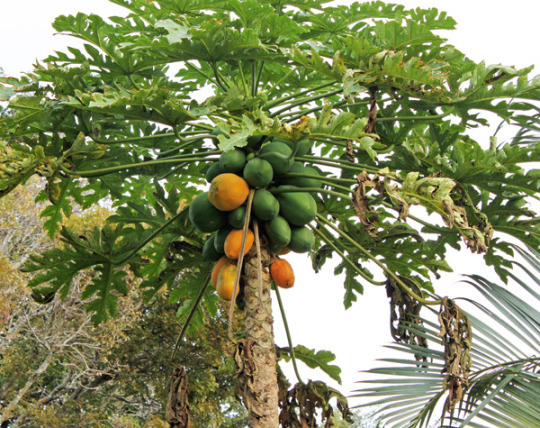
»Tega dne ob tej uri bo razred vašega otroka obiskal »el paje real« in malim šolarčkom prinesel darila. Starši vabljeni!« Ne čisto takšno, vendar podobno obvestilo dobim na svoj pametni telefon, saj Kalinova šola s starši komunicira izključno s pomočjo nekakšne specializirane šolske aplikacije. Najprej v spletni brskalnik vtipkam »el paje real«, saj ne vem, kaj po špansko to pomeni, in na zaslonu mašine se mi prikaže sestavljanka dvornih pažev. Dvorni paž, torej! In noben izmed belobradih mož. Smiselno, da. Če trije kralji januarja španskim otrokom prinesejo tavelika in taglavna darila, potem je tisti, ki pride z darili v izvidnico, kraljevi služabnik.
Starši čakamo pred s soncem obsijanim vhodom, da nam Angel, šolski vratar in varnostnik, odpre vrata. Ob poti, ki vodi do šolskega poslopja, rastejo benjamini, raznovrstni kaktusi in krvavo rdeče cvetoči grmi hibiskusa. Zagledam tudi rožnato božično zvezdo (ki jo tu imenujejo »velikonočna roža«), ki zadovoljno raste iz odžaganega štora nekega subtropskega drevesa. Po obokanem odprtem hodniku se sprehodimo do učilnice z našimi triletnimi čukci, svetloba in toplota sta malone poletni. (Vsake toliko pojamram o snegu. Ravnokar sva si z mamo izmenjali sporočila v obliki figuric. Napisala je: »Mi imamo novoletno jelko, snežinke in snežake, vi pa ne!« Jaz pa sem ji odgovorila: »Mi imamo pa palmo, sonce, kozice, hibiskus, mango in avokado!« Le kaj je v človeški živali, da vedno hoče tisto, česar nima?) Vrata učilnice se odprejo in notri nas v zborček razporejeni čakajo mali uniformirančki s svetlečimi se rdečimi jelenjimi rožički na glavicah. Najprej je svojega potrebno zelo poljubčkat, potem pa se postavit na dobro razgledno točko. Kmalu v prostor vstopi »dvorni paž«, ki ni deček, kot bi človek pričakoval, temveč gospa, odeta v modro in zlato, iz pokrivala ji štrli modro pero, čez ramo pa ji visi ogromna turkizna vreča z zlatimi mašnami. Seveda ji bodo otroci najprej nekaj zapeli in zraven malo zaplesali. In seveda je pesmica v angleščini, ubogi Španci so malone obsedeni z neznanjem tega jezika. Zapojejo torej o jelenčku, ki miga s kopitci in z rožički. No, poje in miga predvsem gospa, ki je že pred tem vključila kasetofon oziroma predvajalnik zgoščenk. Mali jelenčki so predvsem vsak v svojem svetu. Ko končajo, se posedejo okrog gospe dvornega paža in ta jih enega za drugim kliče k sebi ter jim izroča bleščeča darila. Saj, kot Dedek Mraz, le, da smo vsi v kratkih rokavih. In, da v notranjem dvorišču od cveta do cveta leta čudovit metulj monarh. »Z otroci opazujemo gosenice, kako se zabubijo in nato postanejo metulji. Ogromno se jih pase po tehle rožah,« nama pove Kalinova tovarišica Margarita.
»Kalin, pazi, da ne padeš v solato!« mu zakličem in se, takoj ko ponotranjim vzklik, začnem sama sebi smejati, kako absurdno vendar to zveni, sploh v tem času. Kalin namreč pleza na zidec, ki ločuje odprti hodnik z notranjim dvoriščem, pod tem pa so po vsej dožini gredice, kjer zeleno rastejo razne vrste solat, blitva, paradižniki, jagode in še kaj. Malo starejši otroci menda (že skoraj čisto) sami skrbijo zanje. »Daj naju tule fotografirat, da se zadaj vidijo papajevci, kdo bi si mislil, da bo najin sin hodil v šolo s papajevimi drevesi in glej, a ne izgledajo tistele papaje kot ogromna slonova jajca?« Predbožični čas, papaje, hibiskusi in pisani metulji, kratki rokavi, zimski solsticij in polna luna, kaj pa naša novoletna jelka, praznično drevesce je vendarle nuja? Najprej smo razmišljali o novoletni palmi v loncu, zdaj pa imamo eno-in-pol metrsko rastlino z bleščeče zeleno rumenimi večdelnimi čvrstimi listi z imenom »žarkasta aralija«. Menda očiščuje zrak, izboljšuje počutje in koncetracijo. Ko bosta tole brala, bo že zdavnaj okrašena, pojeden bo tudi zadnji čokoladni okenček iz adventnega koledarja. Manjkalo bo le še pet dni, preden v ocean spustim 356 papirnatih ladjic, celo staro leto torej. Slišim, da bo mlado leto leto komunikacije, z veliko odkritega in še več prikritega in skritega. Dobro bo torej prisluhniti in slišati, pa ne prehitro reagirati ... Kakorkoli, čin čin, ko odzvoni, pri vas eno uro prej, kot pri nas, hi hi, in na zdravje!
0 notes
Photo

Deček z gosjo ni več skrit. #boy with #goose #statue #plečnik #fountain #spring #ljubljana #visitljubljana #Slovenia #IfeelsLOVEnia #fuente #muchacho #Eslovenia #walkingtourljubljana (at Ljubljana, Slovenia)
#ljubljana#fuente#spring#goose#walkingtourljubljana#eslovenia#slovenia#boy#ifeelslovenia#visitljubljana#plečnik#muchacho#fountain#statue
0 notes
